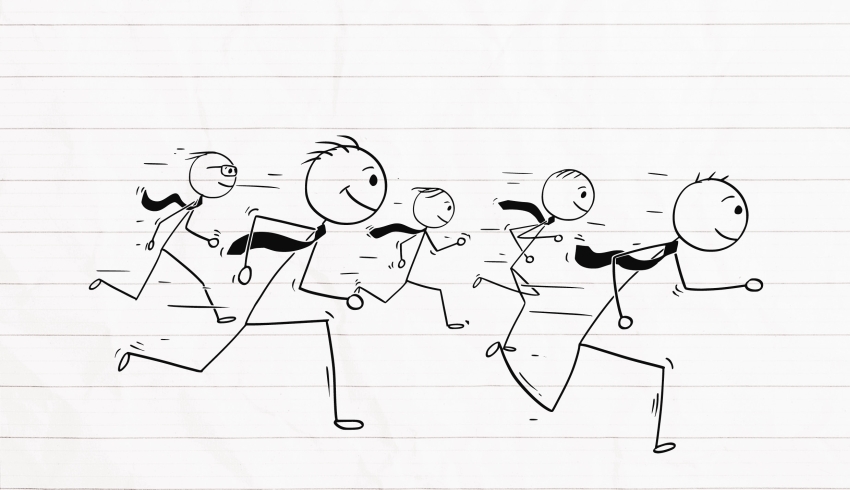Early career teachers – Advice for leaders and ECTs

Whether you’re leading ECTs or are one yourself, these experts have got spot-on advice for you…

- by Teachwire

Taking the ‘TA to teacher’ route

Not sure you’re ready to teach? Maybe dip a toe into the classroom first, says teacher Lucy Daniels…
I’ve always wanted to become a teacher. I just wasn’t sure when would be the right time to enter the profession.
When I graduated with qualified teacher status in 2020, the world was a very different place. It was peak covid and I’d missed a big chunk of in-person learning.
So I decided not to apply for early career teacher jobs immediately. I didn’t want to risk becoming overwhelmed.
I took the longer view and decided to look at teaching assistant jobs first. That way I could get a bit more school experience under my belt before I committed to life as an early career teacher.
That’s when I learned about the TA into Teaching route offered by Warrington Primary Academy Trust (WPAT), which runs eight primaries across Warrington, Widnes and Halton. I lived near Evelyn Street Primary School in Warrington and was familiar with the trust, so I approached them and was offered a place on the scheme.
Getting more comfortable in the classroom
After the first year, WPAT asked me if I wanted to carry on as a TA. I was loving the role, so I agreed to continue for another year. My headteacher knew I still wanted to become a teacher eventually, so I was confident they would support me when the time was right.
Sure enough, the first time I had to cover for a teacher, I realised that it really was the job for me. I had received so much support and encouragement during the TA into Teaching scheme that I was confident in my ability in the classroom.
I learned so much about the teaching assistant role and teaching itself during the two years I was a TA. I’d always had respect for teachers, but I hadn’t grasped just how hard they worked.
Learning lots on the job
The TA role also gave me valuable insight into just how important teaching assistants are to the running of schools. It’s not just about working with a group of children; you really get to know them.
I loved that I could work so closely with the kids one-on-one, as well as with small groups of children who needed my support, and see just how much this helped them to progress.
The class teacher I worked with as a TA was a Key Stage lead, so she was out of the classroom quite a bit. This meant I was also able to teach from time to time, keeping up with the national curriculum and planning, with support from other teachers.
When I started at Evelyn Street, I’d never delivered the scheme of phonics that they use at that school, but the teaching assistant role meant that I became very familiar with it through experience and lots of CPD.
Everyone always says that writing is the hardest part of the curriculum to teach, especially when you’ve got to get around the whole class, but those observations, coupled with online CPD, gave me a valuable insight into techniques and strategies that really worked.
I’m now in my second year of teaching, receiving support as an ECT. I have regular meetings with my teacher mentor to discuss my progress and any issues. She also teaches with me and observes me in the classroom.
The aim is always to highlight my progress and identify any areas of teaching where I might benefit from help and support. It’s a really nurturing environment, and I feel that I’m guaranteed success. I can raise what seems like a million questions every day and it never feels like I’m asking too much.
Building on the experience
For the moment, I’m very focused on the day-to-day of my role and learning as much as I can. Looking further ahead, I do have ambitions in terms of middle leadership or senior leadership. Obviously, that’s a long way off yet, but I would like to lead a couple of subjects in the future, perhaps music.
When I went for the TA role some of my friends asked me why I didn’t want to go straight into teaching, but it was perfect for me. I was in the classroom every single day, observing teachers at work and building a strong relationship with the children.
Then, when I started my teaching, I drew constantly on my two years as a TA. I’d be thinking, “That teacher did this and it worked really well, so I’ll try and do it that way.” And I already knew the children and was familiar with how the school runs – and their high expectations. I was able to hit the ground running.
I would definitely recommend this ‘try before you buy’ type route into teaching as a way to make absolutely sure it’s the career for you. It’s put me where I am today.
TA to ECT – how does it work?
WPAT’s TAs into Teaching is a ‘try before you buy’ route into teaching, which involves offering potential teachers a teaching assistant role in one of the trust’s schools for 12 to 18 months. It is designed to give participants an understanding of the classroom teacher’s role and how teaching assistants work with teachers.
“It’s a safe space, where prospective teachers can dip their toes in the water of teaching,” says Louise Smith, CEO of WPAT. “They can find out where their strengths lie and in which areas they will need that extra bit of help to develop.
If they are ready after 12 months, then we will offer them a teaching post. If they aren’t then they can carry on in the role, all the while providing a vital supporting role for children’s learning.”
WPAT has been developing this route into teaching for the past five years and it has produced several practising teachers, including Lucy.
WPAT’s Generate Teaching Hub also offers a range of other ECT training routes alongside the try-before-you-buy options, including a popular School-Based Teacher Training programme.
For more information about TA routes, ECT teaching jobs and other ways of getting into teaching at WPAT, contact CEO Louise Smith at ceo@wpat.uk, or visit generateteachinghub.org.
Lucy Daniels is Year 1 and 2 teacher at Evelyn Street Primary, part of Warrington Primary Academy Trust (WPAT).
How leaders can stop early career teachers getting overwhelmed
Make sure you’re not the kind of school leader who leaves their early career teachers to fend for themselves, urges Dr Chris Baker…
Each year, thousands of teachers will commence their first role in the profession as early career teachers at new schools.
Sadly, each year will also see thousands of early career teachers spend those first few weeks in a haze of confusion and dented confidence.
If they want to do the best by their staff and students, school leaders must therefore proactively seek to soften the impact of that inevitable drop in confidence that takes hold every September.
The self-efficacy lull
Confidence is a powerful thing, and often the unconscious driving force behind our thoughts, feelings, motivations and actions. Our levels of task-specific confidence – or ‘self-efficacy’, as the literature would have it – will help to either push us towards, or pull us away from starting tasks and challenges. It moderates how much effort we apply, and guides us in either persisting or giving up in the face of adversity.
The godfather of self-efficacy is Albert Bandura. His work highlighted how our perceived levels of task-specific confidence are extremely dynamic. They fluctuate almost constantly, due to past experiences, comparisons with others and social or internal persuasion.
Faced with a completing set of algebraic equations or a 10k run, we’ll seek out ‘evidence’ to decide how confident we feel. Have we been successful at such tasks before? Have we seen others similar to us be successful? Is there anyone else – or own internal voice – telling us we can or can’t succeed?
Changes to our context can also have an impact. Early career teachers taking up their first post will almost always experience a dip in their confidence that we could call a ‘self-efficacy lull’.
If unrecognised and unresolved, these lulls could cause otherwise capable early career teachers to doubt their abilities, second-guess their decision making and lower their expectations.
The good news, however, is that leaders can proactively reduce the impact of these lulls by focusing on two key areas:
- ensuring that ECTs have clear mental models
- making sure ECTs feel psychologically safe
Mental models
Mental models are our personal representations of what things are and how they work. Peps Mccrea’s work on ‘developing expert teaching’ suggests that these mental models typically drive how we behave. This then has a direct influence on our impact and effectiveness.
If our mental model of something like feedback is accurate, we can use that clarity to ensure we perform feedback tasks correctly. This in turn should then lead to the desired impact.
Unfortunately, the opposite is also true. If you’re like me, you can track many of your past mistakes back to a lack of understanding – or in other words, an inaccurate mental model.
ECTs have two major mental model challenges to overcome. They will have formed existing models during their training year which may not be accurate. And they will have a complete absence of any models for the school-specific systems, processes and behaviours they’re about to experience.
School leaders must therefore invest significant time into an ECT induction process. This should go beyond the provision of a school handbook and a tour of the reprographics room, and into a much deeper exploration of understanding.
ECTs should have complete clarity around school systems and processes. This includes attendance, behaviour, reporting and everything else they’ll be expected to utilise and be evaluated on.
Differing experiences of early career teachers
Leaders mustn’t assume that all ECTs are created the same. The reality is that their training experiences will vary greatly. Their understanding of effective teaching and learning may also differ.
Less glamorous than pedagogy, but equally important to ECT clarity and effectiveness are the expectations around staff conduct. Leaders can’t justifiably challenge behaviours that haven’t been fully explained. Elements such as directed time, communication protocols, line management structures and even dress code shouldn’t be left to osmosis.
Leaders who devote time to exploring and refining ECT mental models will be investing in not just their relationships with those teachers, but also the learning experiences of their students.
Psychological safety
The complexity of schools and the pace of early September means that even with the best induction process, there could still be a residual amount of confusion for ECTs and inaccuracies in their mental models.
This means it’s important that leaders create an environment in which ECTs are able to feel vulnerable. One where they’re free to seek out answers to any lingering questions.
This sense that one won’t be punished or humiliated for expressing ideas, questions, concerns, or mistakes is termed ‘psychological safety’. It has been shown to be a significant factor in the success of many teams and organisations.
Amy Edmondson’s work on this topic shows that when leaders get it right, they can dramatically increase feelings of belonging, inclusion and authenticity among their staff. This leads to greater levels of engagement, motivation and commitment.
“When leaders get it right, they can dramatically increase feelings of belonging, inclusion and authenticity among their staff”
Getting it wrong results in environments where staff feel they need to self-censor and hold back from being their true selves. Confusion lingers, with questions going unasked. Good ideas never make it to the table and ineffective practices persist due to lack of any challenge.
I expect we’ve all previously been in psychologically unsafe situations where a leader proposes a plan of action and receives what looks like an approving silence from their audience. That idea is then picked apart once individuals are out of the meeting and back within the safety of their peer group.
Creating the culture
ECTs are in both a challenging and privileged position when it comes to psychological safety. Their newness to the school may initially lead them to self-censor, as they don’t want to seem weak, needy or bother people.
But at the same time, it’s that very newness that gives them licence to ask lots of questions.
The challenge for leaders is to not passively allow the inevitable variation in ECT safety to govern those first few weeks of September.
To create psychologically safe environments, leaders must clearly communicate:
- a desire for honesty
- an openness to curiosity
- their own fallibility
They need to create a culture and set up processes that enable them to catch and correct misconceptions before they can have a negative impact. They also need to celebrate those who bravely decide to ask questions, put forward ideas or present an alternative points of view.
Leaders who do this successfully will double down on the relationships generated through complete clarity. They’ll also magnify the subsequent impact on their students and the school as whole.
- Speak last
Listen to others before adding your input; going first may lead others to self-censor because their views don’t match. - Propose provisionally
Always leave room for discussion and alternative viewpoints,
- Model vulnerability
Recount personal mistakes or times of confusion so others can follow.
- Regularly reset permissions
Remind staff about your desire for honesty and the importance of psychological safety.
- Celebrate vulnerability
Praise those who suggest, question and challenge.
- Fail forward
Treat mistakes as stepping stones to further improvements and innovation.
Dr Chris Baker is leader of professional development at the Cabot Learning Federation
Advice for your first year as an Early Career Teacher

If you’re a fledgling teacher still getting to grips with what the job entails, John Lawson would like a word…
My target audience today is the resourceful Early Career Teacher cohort who have managed to survive the immense challenge of complex studies, teaching practice, interviews and so much more.
Welcome to the wonderful, life-changing world of teaching. Allow me to make a few noises that may help you.
First off, be true to yourself. You’ll never connect with your students if you adopt a teaching persona based on someone you admire. What fits them superbly may never suit you.
Teenagers are like animals – some of them wild, others less so, but all driven by acute sensory perception. They can instantly sense when something is amiss about Miss or Sir, and they’re skilled trackers.
If you want to ace their sniff test, stand your ground, maintain eye contact, smile and let them see someone confident, knowledgeable, and passionate about their subject. The more you love to teach, the more your students will love to learn. Great teachers always assume they’re teaching great subjects.
“The more you love to teach, the more your students will love to learn”
Embers of autonomy
Teach as you can, and not as you can’t. No two teachers will shape any syllabus in quite the same way; indeed, variety is the spice of classroom life. The way that works for you is always the best way to teach. You must adhere to the aims and objectives of the course – but the rest is your call, which is where the profession’s remaining embers of autonomy and agency will be warmest.
Every principal’s primary concern about the teachers they oversee will be, ‘Can they deliver the goods?’ I once took over a supposedly ‘unteachable’ bottom set Y11 RE class, and had just two terms to get them through their GCSEs after the school had all but given up on them. This was a ‘mission impossible’ that called for an unorthodox, even risky approach.
I therefore promised the students that if they let me teach uninterrupted for 20 minutes each day, they could have the other 30 minutes to themselves. I saw this as being 20 quality minutes gained, rather than 30 minutes lost.
Every night I prepared a 10-point handout to teach from. Teenagers can behave and concentrate for 20 minutes, providing the incentives are appealing. Once their free time commenced, the various social groups in the class would play cards, listen to music or quietly chat.
From my point of view, enjoying the craic and being high-fives-friendly was better than risking a bunch of fives. They respected me as a friendly and ‘brainy dude’, but I was never a mere friend. 12 of my ‘disciples’ went on to diligently earn a C in RE, and I’ve often wondered how they explained their sole GCSE to their own children…
Discipline and punishment
Ludwig Wittgenstein’s sharpest contribution to education was his conclusion that we cannot accurately read students’ minds. This is why it’s so important to focus on delivering high quality teaching by avoiding the simple relaying of facts, when raising questions is more engaging.
For example, instead of just asserting ‘Racism, sexism, and homophobia are indefensible,’ turn this round by asking them ‘How do we know that racism, sexism, and homophobia are indefensible?’ The concentration span of teenagers peaks when you let them speak, and they love discovering answers!
“The concentration span of teenagers peaks when you let them speak”
Discern the difference between discipline and punishment as soon as you can, and avoid shouting – it never helps. Effective disciplinary responses to unwanted behaviour are those that educate teenagers out of poor conduct.
Teachers must also model and foster respectful behaviour. Once you’ve created a healthy, fear-free learning environment, everything else falls into place. Most detentions are pointless unless they truly educate the detained.
Mutual respect
Don’t sweat the small stuff. New teachers invariably face challenges to their authority, but when you encounter behaviour that doesn’t prevent the majority from learning, let it pass. However, you must never let any form of abuse or aggression slide. The more you tolerate, the more you’ll have to tolerate in future.
Prioritise disciplinary actions over the curriculum, and calmly address situations as privately as possible. Lost time can be quickly made up once student behaviour improves. Respect is a two-way street, so respecting your students is a categorical imperative.
Finally, read Parker J Palmer’s brilliant polemic, The Courage to Teach, and if you haven’t already, watch Freedom Writers, Dead Poets Society and Stand and Deliver – a set of outstanding works that all identify and celebrate inspirational teaching.
John Lawson is a former secondary teacher, now serving as a foundation governor while running a tutoring service, and author of the book The Successful (Less Stressful) Student (Outskirts Press, £11.95); find out more at prep4successnow.wordpress.com or follow @johninpompano











